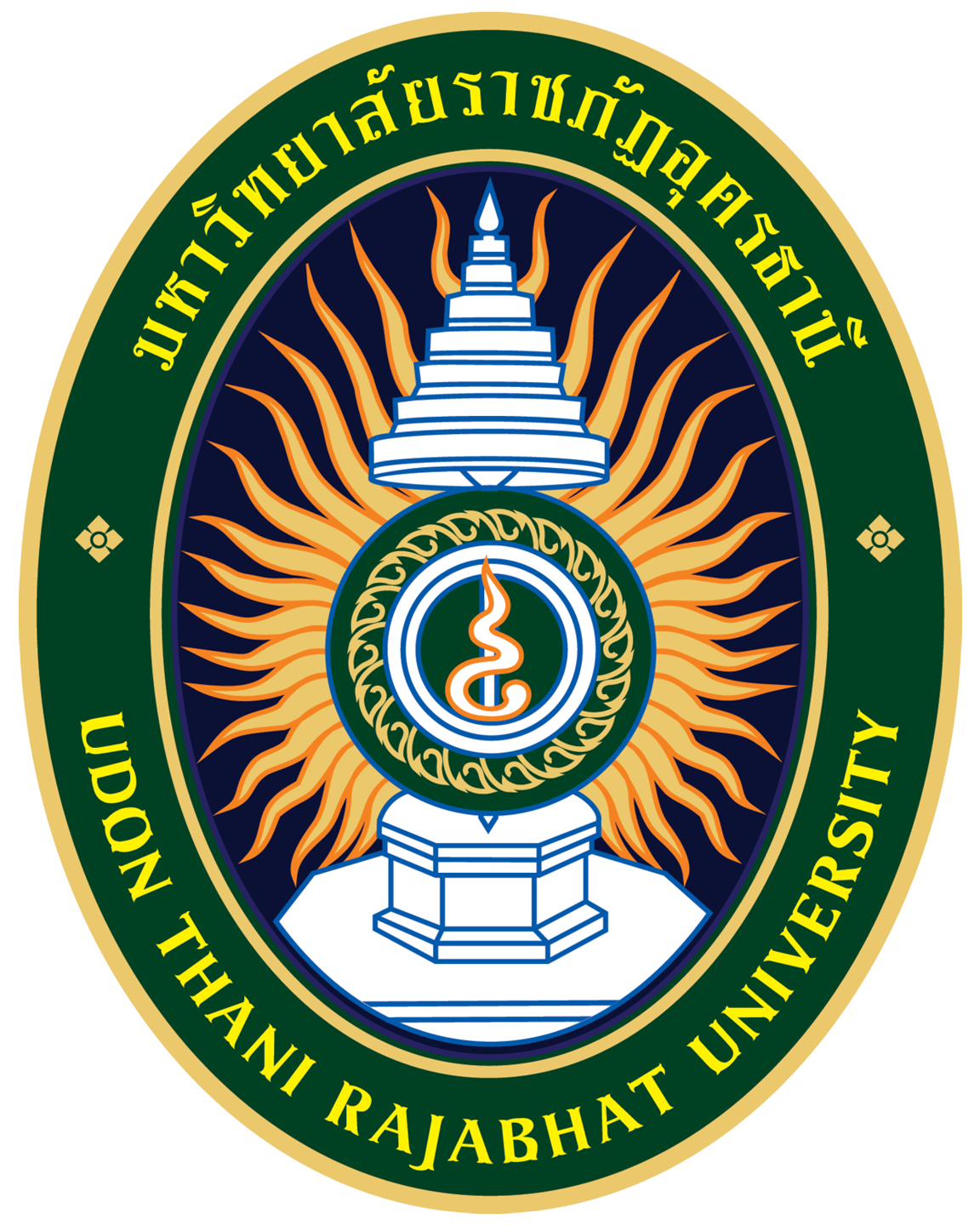THE EFFECT OF AIR RATIO ON COMBUSTION BEHAVIOR IN VERTICAL BIOMASS BURNER
Main Article Content
Abstract
The objective of this research was to investigate the effect of primary and secondary air ratios on the combustion behavior. In this experiment, the vertical biomass burners had an internal diameter of 30 cm. and the height of 70 cm. The air that enters the burner is split into two portions. The primary air transports the fuel from the screw conveyor to the bottom of the burner, while the secondary air feeds the center burner in a three-way swirling air system. This experiment used rubber-wood sawdust as biomass; biomass fuel, dust from rubber wood ivy sifted through a 1.5 mm hole sieve. Combustion with a heating power of 150 kW and 10 percent excess air, tested at primary and secondary air ratios of 2:3, 1:1, and 3:2, respectively. The result showed that injecting secondary air creates an intensive combustion reaction inside the burner's center, between the radius ratio (r/R) 0.33 to 1.00. Considering the flame's nature, it was discovered that when the primary air increases, numerous large particles escape and catch fire outside the burner. A primary and secondary air ratio of 2:3 results in a maximum flue gas temperature of 925 °C and a minimum carbon residual in flying ash of 38.22 %. The combustion efficiency is expected to be 89.29 %.
Article Details
References
คณิต มานะธุระ และ อุกฤต สมัครสมาน. (2565). สมรรถนะของเตาไพโรไลซิสกะลามะพร้าวชนิดให้ความร้อนด้วยตนเอง. วารสารวิทยาศาสตร์และเทคโนโลยี มหาวิทยาลัย เกษตรศาสตร์, 11(2), 13–20.
ชินภัทร ธุระการ. (2558). การพัฒนาหัวเผาเชื้อเพลิงชีวมวลในหม้อน้ำอุตสาหกรรม. (วิทยานิพนธ์วิศวกรรมศาสตรมหาบัณฑิต, สถาบันเทคโนโลยีพระจอมเกล้าเจ้าคุณทหารลาดกระบัง).
นิกราน หอมดวง, พันธวัฒน์ ไชยวรรณ์, ภูนิฑัต สายแก้ว, ประภัสสร รัตนไพบูลย์, กิตติกร สาสุจิตต์, เสริมสุข บัวเจริญ, นงเยาว์ หอมดวง, ยิ่งรักษ์ อรรถเวชกุล และ ชูรัตน์ ธารารักษ์ (2564). การพัฒนาเครื่องปฏิกรณ์ไพโรไลซีสสำหรับการใช้งานผลิตความร้อนถ่านชีวภาพ. วารสารวิชาการพลังงานทดแทนสู่ชุมชน, 4(1), 47–53.
ปกรณ์ อุ่นไธสง และ รชต มณีโชติ. (2562). การสร้างเครื่องและหาประสิทธิภาพถ่านอัดแท่งจากฝักราชพฤกษ์. วารสารวิทยาศาสตร์และเทคโนโลยี มหาวิทยาลัยราชภัฏอุดรธานี, 7(2), 147–157.
ปานใจ สื่อประเสริฐสิทธิ์, ศิริวรรณ แก้วสวิง และ อมรประภา ทิศกระโทก. (2563). การผลิตถ่านชีวภาพและเชื้อเพลิงเขียวจากเปลือกทุเรียน. วารสารวิทยาศาสตร์และเทคโนโลยี มหาวิทยาลัยมหาสารคาม, 39(5), 580–586.
พลชัย ขาวนวล, สมบูรณ์ ประสงค์จันทร์ และ สุนารี บดีพงศ์. (2563). การพัฒนาสมรรถนะเตาชีวมวลชนิด TLUD ระดับครัวเรือน. วารสารวิจัยมหาวิทยาลัยเทคโนโลยีราชมงคลกรุงเทพ, 14(1), 52–62.
ภราภรณ์ เหล็กสูงเนิน, วรชาติ วิศวพิพัฒน์ และ ดาวจรัส เกตุโรจน์. (2560). ผลการใช้ถ่านชีวภาพจากแกลบต่อสภาพการละลายจุลธาตุอาหารพืชและการเจริญเติบโตของข้าวที่ปลูกในดินเนื้อปูน. วารสารพืชศาสตร์สงขลานครินทร์, 4(3), 65–74.
เยาวพล ชุมพล และ โฉมยง ไชยอุบล. (2564). ผลของถ่านไม้มะม่วงชีวภาพต่อการเจริญเติบโตและผลผลิตของข้าวโพดข้าวเหนียว. วารสารวิทยาศาสตร์และเทคโนโลยี มหาวิทยาลัย ราชภัฏอุดรธานี, 9(1), 113–125.
พิมพ์พรรณ อำพันธ์ทอง, เสริมศิริ ปราบเสร็จ และ ลลิตพัทธ์ สุขเรือน. (2564). การพยากรณ์ก๊าซที่เกิดจากการผลิตก๊าซชีวภาพด้วยวิธีบอกซ์-เจนกินส์. วารสารวิทยาศาสตร์และเทคโนโลยี มหาวิทยาลัยราชภัฏอุดรธานี, 9(1), 31–46.
ASTM D3174-12. (2018). Standard Test Method for Ash in the Analysis Sample of Coal and Coke from Coal. West Conshohocken, PA: ASTM International. Retrieved October 26, 2022, from www.astm.org.
Garcia-Maraver, A., Perez-Jimenez, J. A., Serrano-Bernardo, F., & Zamorano, M. (2015). Determination and comparison of combustion kinetics parameters of agricultural biomass from olive trees. Renewable Energy, 83, 897–904.
Jugjai, S., & Polmart, N. (2003). Enhancement of evaporation and combustion of liquid fuels through porous media. Experimental Thermal and Fluid Science, 27(8), 901–909.
Kamal, M. (2008). Parametric study of combined premixed and non-premixed flame coal burner. Fuel, 87(8–9), 1515–1528.
Koppejan, J., & Van Loo, S. (2012). The handbook of biomass combustion and co-firing. Routledge.
Laphirattanakul, P., Charoensuk, J., Turakarn, C., Kaewchompoo, C., & Suksam, N. (2020). Development of pulverized biomass combustor with a pre–combustion chamber. Energy, 208, 118333.
Nishiyama, A., Shimojima, H., Ishikawa, A., Itaya, Y., Kambara, S., Moritomi, H., & Mori, S. (2007). Fuel and emissions properties of Stirling engine operated with wood powder. Fuel, 86(15), 2333–2342.
Rasoulkhani, M., Ebrahimi-Nik, M., Abbaspour-Fard, M. H., & Rohani, A. (2018). Comparative evaluation of the performance of an improved biomass cook stove and the traditional stoves of Iran. Sustainable Environment Research, 28(6), 438–443.
Riaza, J., Gibbins, J., & Chalmers, H. (2017). Ignition and combustion of single particles of coal and biomass. Fuel, 202, 650–655.
Saeed, M. A., Andrews, G. E., Phylaktou, H. N., & Gibbs, B. M. (2017). Flame speed and Kst reactivity data for pulverised corn cobs and peanut shells. Journal of Loss Prevention in the Process Industries, 49, 880–887.
Sousa, N., & Azevedo, J. L. (2016). Model simplifications on biomass particle combustion. Fuel, 184, 948–956.
Stephen, R. T. (2000). An introduction to combustion: concepts and applications. McGrw–Hill Companies, Inc.


